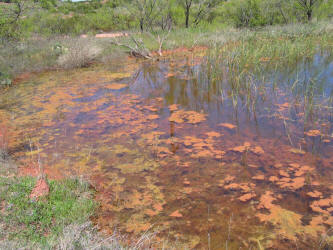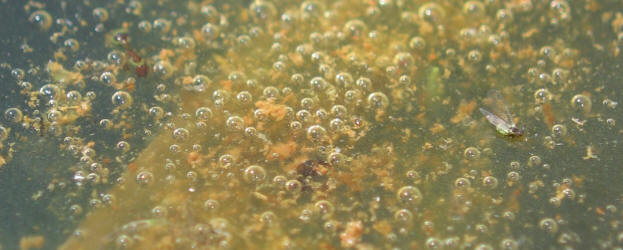Welcome to Catnapin's
Aquatic Plant Gallery
Water Plants
Euglenozoa - phylum Hydrodictyaceae - family
Green Algae **za 5**
possibly Pediastrum boryanum
This is the freshwater algae that grows in every pond and lake.
Photos taken in Taylor County, Texas, April & August 2005
(Native of Texas)
Pond algae, in green and golden phases
_small.jpg)

Close up of bubbles in algae.


_small.jpg)
_small.jpg)
_small.jpg)
_small.jpg)
Charales - Stonewart order Characeae - family
Muskgrass (Skunkweed, Chara) Chara sp.
This is a multicellular form of Green Algae, not a flowering plant. The central stem
with whirls of short leaf-like stems. The base is typically anchored to
bottom with rhizoids but if broken will float free. The depth of growth
depends on light penetration of the water. They are rough because of
calcium salts in the cell walls.
The common name refers to its unpleasant garlic-like smell of hydrogen sulfide. In a
drought, stinking mats of dead Chara line the shore helping to reduce erosion.
Chara filters sediment from the water. It also provides a safer area for small
fish and other animals. Some duck species eat Chara. Birds transport
small pieces to uninfected ponds where they proliferate.
Photos taken in Taylor County, Texas, July 2008
(Native of Texas - family not listed in BONAP)
|
Also see:
water plants |